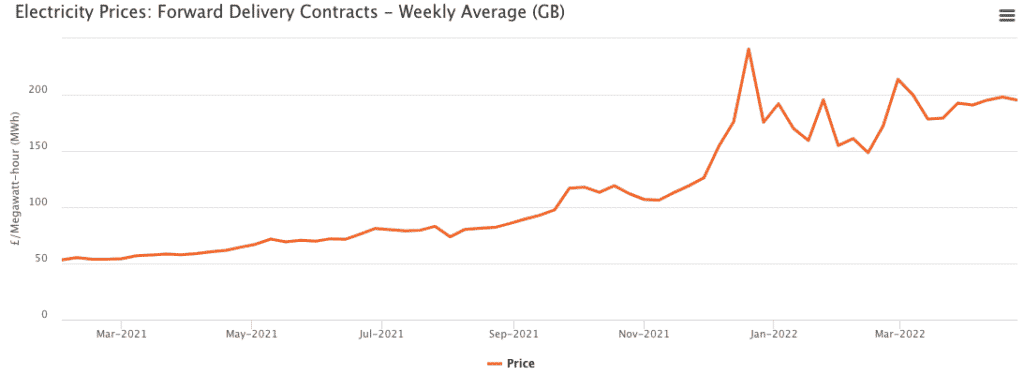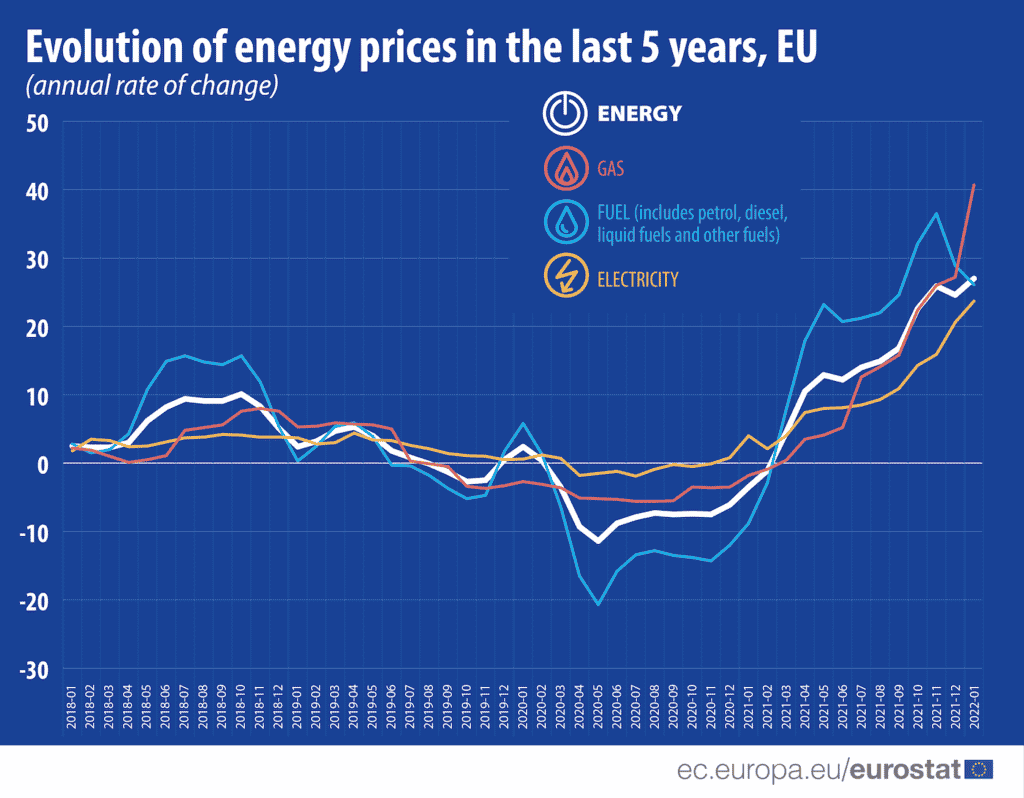Energy prices in the UK are skyrocketing. The average seasonal expenditure has risen from £53 in February 2021 to £195 in April 2022. Energy costs have constantly been increasing since 2021. Europe is seeing a 30% rise in 2022 (annual rate of change). Current political dynamics are exacerbating the situation. Most analysts agree that energy prices will likely remain high unless there is a fundamental shift in the global paradigm.
What does this mean for digital signage? Put simply, digital signage is driven by electricity. Commercial screens are typically run for extended durations, powered by PCs or media players that run 24 hours a day, 7 days a week. This means the cost of running a digital signage network is rising sharply.
So should we be turning off digital signage and moving back to posters? Or is there a way to reap the benefits of digital signage and keep energy costs under control?
Despite the troubling price increases, choosing low-power hardware is one of the best ways of reducing digital signage running costs. We tested two of the most popular devices to assess hardware choice’s impact on energy costs. The results were astonishing. Choosing low-power android media players instead of traditional Windows PCs can save you over 90% on your energy bills. At scale, this can equate to five-figure savings across the board.


How does Digital Signage work?
Let’s refresh our memory on how digital signage operates. Digital signage screens are usually powered by a PC or a media player. PCs and media players sit behind the screens and link to a content management system (CMS). Once installed, these devices allow organisations to manage hundreds of screens from a central location. Managing screens in this fashion was revolutionary for marketing and communication teams. It reduced unnecessary printing and has saved hours of manual work updating posters and travelling to physical locations. The introduction of digital signage empowered people to deliver dynamic content worldwide.
Android Media Players vs Windows PCs
When it comes down to displaying content on a screen, there are often 2 common options. Android media players and Windows PCs. But which device is more eco-friendly and keep your costs down?
At TrouDigital we experimented. We used a power usage monitor to measure the energy consumption of Windows Desk PCs versus Android Media Players. This was by the new UK energy price cap (£0.28 kWh). The results were astonishing.
The energy to power Windows PCs costs £119 a year. Android media players cost £7.01. Windows PCs consume 50 Watts per hour. Media Players consume 3.
Windows PCs can prove to be an eye-watering cost addition to companies with larger digital signage networks. For a company with a network of 100 screens running 24/7, Android media players could save over £10,000 a year.
Cost-Efficiency and Eco-Friendliness: Media Players are a Double Opportunity
An Android media player consumes 10 times less power than a Windows PC. This means that it also produces 10 times less CO2. The UK’s average CO2 emission from electricity is 269g of CO2 per kWh. For a Windows PC that consumes 0.05 kWh, 440kg of CO2 every year. A media player produces 44kg.
Consider that a mature tree absorbs 22kg of carbon dioxide over a year. 20 trees are necessary to offset the yearly CO2 produced by a Windows PC. 2 trees are sufficient for the CO2 of a media player. A company that uses digital signage could have these trees easily panted as a sustainability initiative!
Finally, some day-to-day comparisons. A media player that runs 24/7 saves 1000 Watts a day. This is free electricity for 8 cups of coffee or 6 slices of toast. It also amounts to saving the energy and CO2 produced by a lightbulb every day. A media player for a free lightbulb. With a large enough digital signage network, media players could save you the cost of lighting in your office.

Conclusion
After our experiment, media players appear to be the answer to spiralling energy costs. They consume 10 times less energy than Windows PCs and produce 10 times less CO2. They can save you tens of thousands across the board every year. Media players are the response digital signage needs to its new energy challenges.
In addition, for companies with sustainable initiatives, media players are far easier to offset, pulling that goal of getting to Net Zero a little closer.
Want to find out more? Speak to the team today by clicking the button below.
